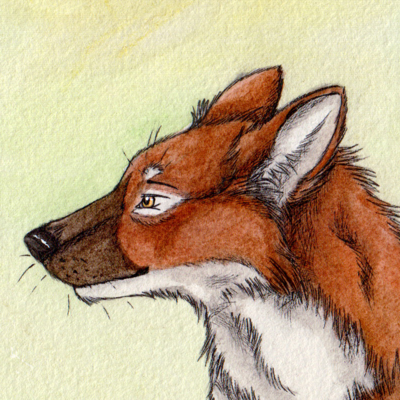Actually, it’s 5 4 10 12 2 9 8 11 6 7 3 1 for me, but too lazy to edit the image
Which language provides the most random alphabetically sorted sequence?
Data
| N | Eng | Dut | Ger | Tur | Chi | Lex | |----+-----+-----+-----+-----+-----+-----| | 1 | 8 | 8 | 8 | 6 | 8 | 1 | | 2 | 11 | 3 | 3 | 5 | 2 | 10 | | 3 | 5 | 1 | 1 | 1 | 9 | 11 | | 4 | 4 | 11 | 11 | 9 | 6 | 12 | | 5 | 9 | 9 | 5 | 4 | 3 | 2 | | 6 | 1 | 10 | 9 | 2 | 4 | 3 | | 7 | 7 | 12 | 6 | 10 | 7 | 4 | | 8 | 6 | 2 | 7 | 11 | 10 | 5 | | 9 | 10 | 4 | 4 | 12 | 12 | 6 | | 10 | 3 | 5 | 10 | 8 | 11 | 7 | | 11 | 12 | 6 | 2 | 3 | 5 | 8 | | 12 | 2 | 7 | 12 | 7 | 1 | 9 |Sourced from comments in thread (English from image, Dutch from !Vinny_93@lemmy.world, German from !TJA@sh.itjust.works , Turkish from some rando, Chinese from !idealotus@lemmy.world, Lexicographical from !monogram@feddit.nl)
Plot with Correlation Scores
We will compute the pearson correlation (r-statistic) score by comparing the base number (column 1) with the corresponding language column. We will also compute the Serial correlation, by creating staggered columns that measure how close a number is in a sequence to the one before it.
Staggered Table
cat alphabetic.tab \ | awk '{print $0"\t"prE"\t"prD"\t"prG"\t"prT"\t"prC"\t"prL;prE=$2;prD=$3;prG=$4;prT=$5;prC=$6;prL=$7}' \ | tee alphabetic.tab.staggerPlot Code
gnuplot -p -e ' set xlabel "Base Sequence"; set ylabel "Alphabetic"; set xtics 1,1,12; set ytics 1,1,12; set title "Alphabetic Number Plot with Correlation Score"; set rmargin 25; set key at graph 1.5,0.9; set size ratio 0.45; stats "alphabetic.tab.stagger" using 1:2 name "E"; stats "" using 1:3 name "D"; stats "" using 1:4 name "G"; stats "" using 1:5 name "T"; stats "" using 1:6 name "C"; stats "" using 1:7 name "L"; stats "" using 2:8 name "ES"; stats "" using 3:9 name "DS"; stats "" using 4:10 name "GS"; stats "" using 5:11 name "TS"; stats "" using 6:12 name "CS"; stats "" using 7:13 name "LS"; set label 1 sprintf("%10s %6s %6s", "", "Base", "Stagger") at graph 1.07,0.95; plot "" using 1:2 with lines lw 3 title sprintf("%10s %+.3f %+.3f", "English", E_correlation, ES_correlation), "" using 1:3 with lines lw 3 title sprintf("%10s %+.3f %+.3f", "Dutch", D_correlation, DS_correlation), "" using 1:4 with lines lw 3 title sprintf("%10s %+.3f %+.3f", "German", G_correlation, GS_correlation), "" using 1:5 with lines lw 3 title sprintf("%10s %+.3f %+.3f", "Turkish", T_correlation, TS_correlation), "" using 1:6 with lines lw 3 title sprintf("%10s %+.3f %+.3f", "Chinese", C_correlation, CS_correlation), "" using 1:7 with lines lw 1 title sprintf("%10s %+.3f %+.3f", "Lexicon", L_correlation, LS_correlation) '
It looks like Dutch has the lowest (near 0) correlation to both the base sequence and it’s own staggered sequence, with Turkish mirroring it’s staggered randomness somewhat.
The least random alphabetic sequences are English and German.
Updated: Added chinese and staggered analysis.
You put a lot of work into this.
Thank you for doing and sharing this
This is the second comment I’ve seen like this from you.
Please never stop.
I didn’t expect soneone to put that much effort into it.
Thanks! This is awesome!
Acht, drie, een, elf, negen, tien, twaalf, twee, vier, vijf, zes, zeven.
8, 3, 1, 11, 9, 10, 12, 2, 4, 5, 6, 7
I don’t even know 100% that this is Dutch, but Dutch so often reads and sounds like someone German who doesn’t know English trying to speak English and I love the language because of it ❤️
Dutch is an Anglo-Saxon language so that makes sense.
Standard Dutch is not Anglo-Saxon but some other Dutch dialects/languages like Frisian are.
Acht, drei, eins, elf, fünf, neun, sechs, sieben, vier, zehn, zwei, zwölf
8, 3, 1, 11, 5, 9, 6, 7, 4, 10, 2, 12
Ah there it is. The real language, not the one a confused toddler trying to learn German speaks
altı beş bir dokuz dört iki on onbir oniki sekiz üç yedi
6 5 1 9 4 2 10 11 12 8 3 7
Transliterating from Mandarin Chinese and using English dictionary order
Ba Er Jiu Liu Qi San Si Shi ShiEr ShiYi Wu Yi
8 2 9 6 3 4 7 10 12 11 5 1 八 二 九 六 三 四 七 十 十二 十一 五 一
Thanks, I’ve added it to the analysis: https://lemmy.ml/post/32382201/19537907
I still don’t understand how acht=12
acht=12
Gesundheit.
Ah no I started at one. You can transpose my list by one and set zeven as 12.
Lexicographical clock
1 10 11 12 3 4 5 6 7 8 9
You’re missing 2
1 10 11 12 2 3 4 5 6 7 8 9
2 is overrated tbh
2 is overrated
tbh2bh2 is over
rate8dtbh2bh
Okay, here’s the challenge: Make it always tell the correct time 8:30 should point to the 8 with the little hand and the 6 with the big hand. And 8:35 shoudl point to the 7 with the big hand.
I both love and hate this
Was thinking the same thing. This has to be possible, within reason of course
I could get it done with a couple stepper motors, an Arduino, probably a couple hall effect sensors.
In that case, I am officially challenging you. But if you do end up doing it. My instance is shutting down on Monday, so you won’t be able to tag me :(
Make an account elsewhere and comment on this post.
Challenge accepted.
Here for it
It’s on the docket, It may be winter before I get around to it.
Thanks, i hate it :)
Interestingly it would be right twice a day
I’d think four times: 4:20, 4:35, 7:20, 7:35
I’m stupid and read the clock wrong and didn’t check even a little.
You’ll fit in here just fine!
It’s 9 o’clock somewhere!
Portuguese
cinco, dez, dois, doze, nove, oito, onze, quatro, seis, sete, três, um
5 10 2 12 9 8 11 4 6 7 3 1
cinco, dez, dois, doze, meia, nove, oito, onze, quatro, sete, três, um
5 10 2 12 6 9 8 11 4 7 3 1
(six can be “seis” or “meia”)
Mine is Spanish
Cinco (5), cuatro (4), diez (10), doce (12), dos (2), nueve (9), ocho (8), once (11), seis (6), siete (7), tres (3), una (1)
This is extremely sick. I’m going to cancel my Disney account.
What time is it?
It’s Beer O’clock!I don’t get it
If a mechanical clock or watch was like that it would be one hell of a fascinating movement
I hate this so much
5 4 10 2 12 9 6 7 8 11 3 1
Ah yes its nearly 8:03 o’clock
Or nearly 56 minutes to 11:08














